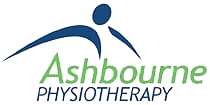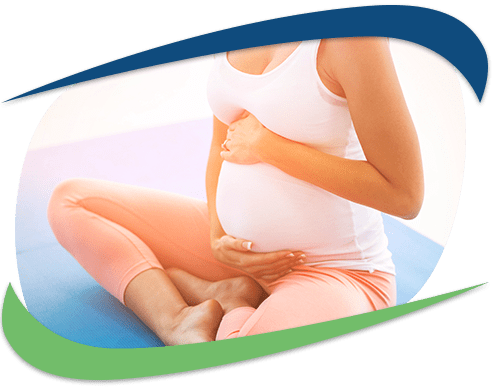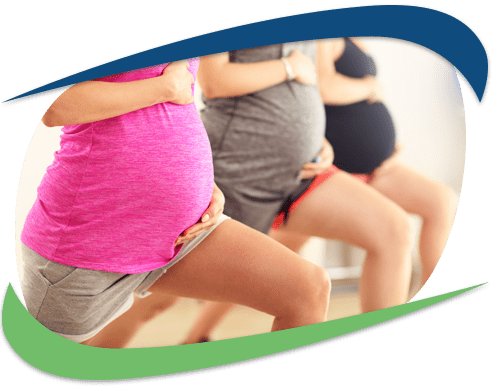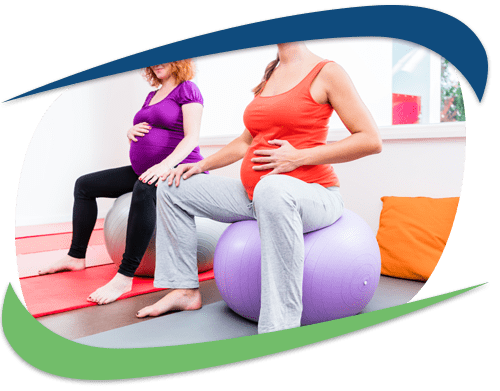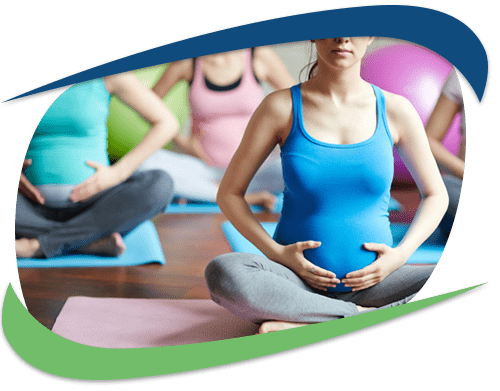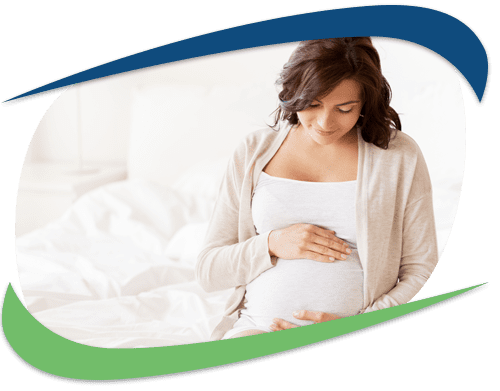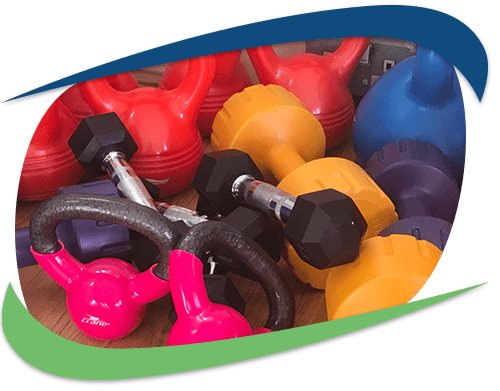The Baby Years
We offer comprehensive care to support you during and after pregnancy.
At Ashbourne Physiotherapy Clinic, we provide physiotherapy to help you through your pregnancy and we will help you get back to full activity following the birth. We specialise in the treatment of pelvic girdle pain during pregnancy, incontinence issues, diastasis recti (split tummy muscles) and return to exercise following the birth.
Pre-natal:
- Pain during pregnancy
- Advice about exercising safely during pregnancy
- Pilates classes suitable for the ante-natal and post-natal period
Post-natal Assessment:
We provide a full mummy check post-partum (one hour) in which we will check for bladder issues and prolapse by assessing your pelvic floor (if you wish). We will also check your tummy muscles, pelvic and hip strength and posture and give you a programme and advice to get back to your full activity.
Make an appointment to see Saoirse Farrelly if you are having any issues during pregnancy or you wish to have a full post-natal assessment.
Pregnancy Physiotherapy
Ante-Natal
This will help to support and strengthen your body during pregnancy and prepare it for the demands of motherhood. We offer an initial assessment with Saoirse Farrelly in the clinic to assess your muscle strength and posture so that we can start a programme tailored for you.
It will focus on prevention and treatment of pelvic and back pain, pelvic floor strengthening, stretching and breathing techniques. You do not need a referral but if you have any concerns, we suggest you talk to your G.P. or obstetrician first.
Saoirse Farrelly teaches our Beginner Pilates classes which are suitable to attend from 14 weeks to labour day!
Post-Natal
Make an appointment for a post-natal check with Saoirse Farrelly. She will help restore your tummy muscle and pelvic floor strength after the birth. It is specifically designed for you to start after your six-week check-up (whether you have had a vaginal delivery or Caesarean section).
She can check your pelvic floor strength and whether you can do the Kegel’s correctly. She will also check your tummy muscles for diastasis recti and the Caesarean section scar for adhesions and can start treatment immediately. Saoirse can also treat blocked ducts and cracked nipples. She will also give advice on return to exercise and when you can start our Pilates classes.
Pelvic Pain During Pregnancy
This is sometimes called pelvic girdle pain and common causes during pregnancy are:
- Symphysis Pubis Dysfunction (S.P.D.)
- Sacro-iliac joint pain
- Low back pain
- Weak gluteal muscles
As you go through pregnancy, the ligaments get looser to prepare for the birth but this can cause strain or uneven movement, especially if you have some muscle weakness. Other symptoms are walking with a limp or waddling gait.
We will take a history and do a full assessment of the back, pelvis and hip to find the cause of your pain. Treatment may include manual therapy, strengthening exercises, postural advice and we may prescribe a support belt. Pelvic pain may resolve on its own after a day or so but if not, it is worth making an appointment with one of our physiotherapists. If you specifically wish to have a check of your pelvic floor muscles, make the appointment with our pelvic physiotherapist, Linda.
Ante-Natal Exercise
It is important that you keep both fit and active during pregnancy and we can help advise you on that.
It is generally not recommended that you take up a new sport during the first trimester but you can continue with your normal activities, within reason.
We run Pilates classes that are suitable for pregnant ladies (from week 14 on).
If we have sufficient numbers, we do run special classes and we can also do private Pilates classes.
We can advise you on what exercises are suitable to do during pregnancy. We can give you a specific strengthening programme or advise you on the best exercises to do in the gym.
Diastasis Recti of the Abdominal Muscles (D.R.A.M.)
Often a vertical gap will appear in the tummy muscles during pregnancy or after pregnancy and if this gap is about two fingers’ width or greater, it is called a diastasis recti. The muscles are usually joined together by the linea alba which is a strong tissue made of collagen. As your tummy grows bigger, this can ease apart. It is more common after multiple pregnancies but can occur the first time around. Causes include a high birth weight, older mothers, having twins and there is probably a genetic element to it. The most common thing noticed is a bulging tummy (sometimes called a ‘mummy tummy’) or doming when there is an outward bulge when you engage your tummy muscles.
We will assess the gap for distance and tension and will check your tummy muscle strength. The main aim is to get the tummy muscles strong and functioning normally. The muscles may never join fully together but once you have good tummy strength, it is rarely a problem.
You can check yourself whether there is a separation or not by lying on your back with your legs bent and your feet flat on the floor. Put one hand along the midline of your tummy and lift your shoulders a little off the floor (as if doing a curl up). If the gap is more than two fingers’ breadth, make an appointment to see Saoirse for a full assessment.
Return to Exercise
Return to Exercise Post-Pregnancy
It is important to get back exercising after you have had a baby as there are many benefits. It will help you get stronger, help you recover from the labour, raise your energy levels, help your mental well-being and help you lose some of those extra kilos you may have put on. However, it is important not to rush back too quickly as the body needs time to adjust to the changes that have happened to it.
The pelvic floor and ligaments can be weaker after a vaginal delivery especially if you had a big baby or a long or very short second stage (pushing). It is important to start exercising your pelvic floor as soon as possible, even a day or two after the birth. Your tummy muscles have also been stretched and need to be strengthened.
It’s okay to start walking as soon as you are comfortable but you should wait at least six weeks before increasing the level of impact.
If you would like us to assess your muscle strength and advise you on what exercises are appropriate, make an appointment to see Saoirse. You can also opt for a pelvic floor examination (at least six weeks post-partum). If you have had a caesarean section, Saoirse will assess the scan and can do scar massage if it is needed. At this stage you can be assessed to see are you ready to do our Pilates classes.
